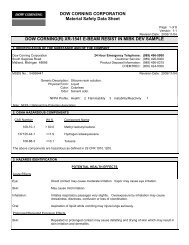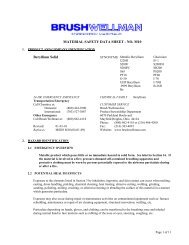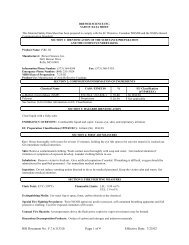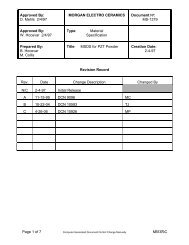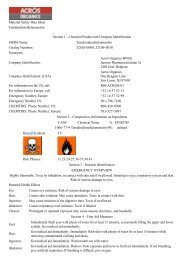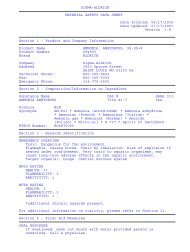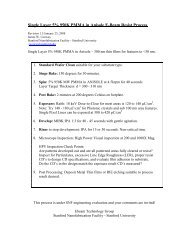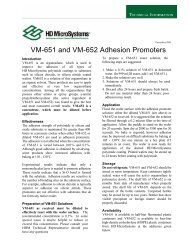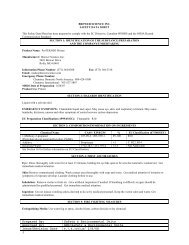EE 410 / Saraswat Handout #3 - Stanford Nanofabrication Facility
EE 410 / Saraswat Handout #3 - Stanford Nanofabrication Facility
EE 410 / Saraswat Handout #3 - Stanford Nanofabrication Facility
You also want an ePaper? Increase the reach of your titles
YUMPU automatically turns print PDFs into web optimized ePapers that Google loves.
<strong>EE</strong><strong>410</strong> / <strong>Saraswat</strong> <strong>Handout</strong> <strong>#3</strong><br />
3. Zero Level Silicon Etch (STEPS 0.200-0.240)<br />
Wafer Scribing:<br />
Wafers should be scribed so that individual wafers can be identified, This is particularly<br />
important when wafers receive different processing, either deliberately (such as in a run "split")<br />
or through accident. The traditional method is to use a diamond scribe to scratch in the lettering<br />
either at the flat on the wafer front side or on the wafer backside. The act of scribing, however,<br />
can create weak spots which may lead to breakage as the wafer becomes stressed (with<br />
temperature cycling and/or wafer handling). Care must be taken to angle the lettering so that no<br />
lines are drawn perpendicular or parallel to the flat (in the directions of the crystal planes) and to<br />
make sure that no lines go to the edge of the wafer (edge defects tend to make wafers especially<br />
vulnerable to breakage.) The art of scribing is particularly important if scribing on base silicon<br />
wafers. Here, we are scribing just into the resist, so that the features will be patterned into the<br />
substrate as the zero level mask is processed. Wafers are numbered in order. Select two which<br />
will be used as test wafers T1 and T2.<br />
Silicon Etch:<br />
Zero level PM marks can be etched using the p5000etch, the lampoly, the amtetcher and even the<br />
drytek2. For the sake of tradition, we used the amtetcher here, although labmembers have used<br />
the other tools as well. Following etch, the Standard Hard Resist Strip is used.<br />
4. Blanket Implant (STEPS 0.300-0.340):<br />
Ion implants are performed by outside commercial services. There are several in the Bay Area<br />
which provide a broad range of capability and fast turnaround. Ion implantation is now regarded<br />
as a commodity service -- even larger semiconductor organizations prefer to rely on outside<br />
services. For this blanket implant:<br />
Species: Phosphorus<br />
Energy: 100 KeV<br />
Dose: 1.75 1012 cm-2<br />
Beam Current: no limit<br />
Implant Angle: 7°<br />
Standard prediffusion clean is performed before implant.<br />
5. Field Oxidation (STEPS 0.360-0.360):<br />
The fields in most standard CMOS are LOCOS grown around patterned nitride. In this process we<br />
grow a uniform field and etch the oxide. This saves a great deal of time, but still gives good results.<br />
• Wafer require Standard Pre-Diffusion Clean.<br />
• Use tube tylan1 or tylan2.<br />
• Program "FIELDOX" in Tylan.<br />
• Like most furnace operations in the lab, this furnace recipe does a number of things in addition to<br />
the actual oxidation:<br />
o After loading the wafers in the quartz boats, the wafers are slowly inserted into the<br />
furnace at a low temperature of about 800°C. The automatic loading assembly is a<br />
Revised Jan. 11, 2008 Page 15/47



